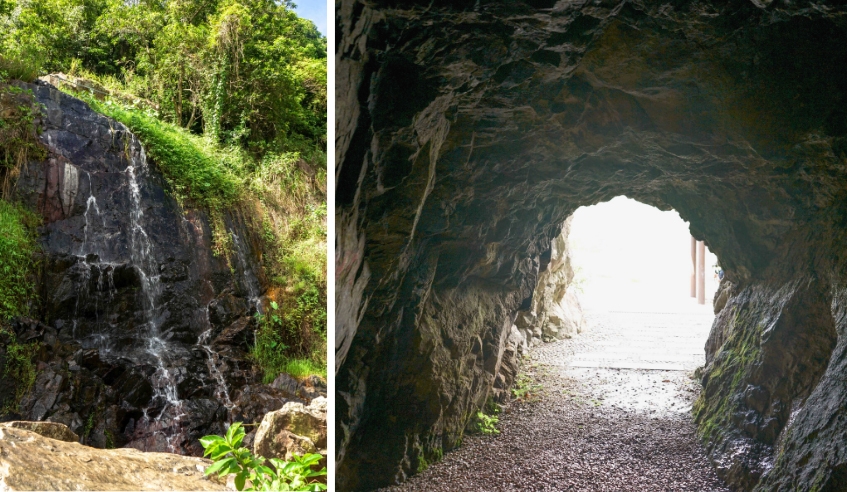Reporting by Ray Au, Photos by Duey Tam & Debby Meyers
You’ll have heard, however vaguely, that Mui Wo was a centre for silver production in the late 19th century hence the name of its glorious bay, waterfall and ‘cave.’ In the late 1880s, at the height of the silver rush, people flocked to Mui Wo to work the mine, and the surrounding area was developed into a village called Pak Ngan Heung, literally translated as ‘Silver Village.’
The main entrance to the mine, now called Silvermine Cave, remains a local attraction. Today, the tunnel extends just 10 metres or so, having been sealed for safety reasons, but it reveals something of the large-scale silver mine, which was developed and owned by Ho A Mei, a local entrepreneur and social activist, and in operation from 1886 to 1896.
These days, with the miners long gone, Silvermine Cave has been taken over by a large colony of indigenous bats – Cynopterus Sphinx Short-nosed Fruit Bats to be precise. They’ve made their home in the dark, disused shafts and tunnels of the old mine, and their stay is secured under the Wild Animals Protection Ordinance by the Agriculture, Fisheries and Conservation Department.
The ‘bat cave’ sits just a few steps up the hill from Silvermine Waterfall, which is one of the most easily accessible in Hong Kong. Walking up from Silvermine Bay, simply follow the path along the Islands Nature Heritage Trail – Mui Wo Section, and the Olympic Trail. It’s an easy 20-minute stroll through sleepy villages and there are no hills to climb.
Be sure to stop at Silvermine Waterfall on your way down from the cave. It’s at its tumultuous best in the rainy season but there’s enough water to fill the stream and surrounding rockpools year-round.

